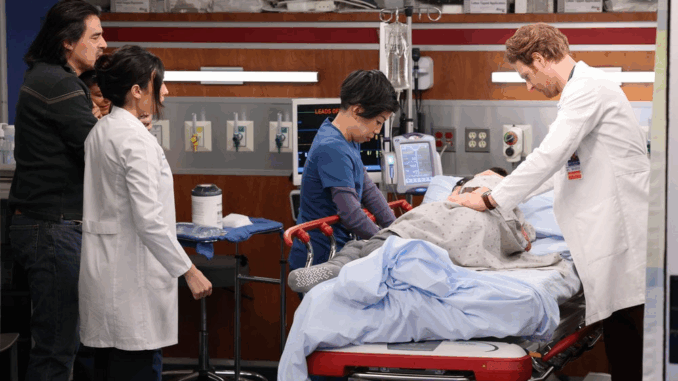
Chicago Med, a cornerstone of Dick Wolf’s Chicago franchise, has captivated audiences for nearly a decade with its high-stakes medical emergencies, intricate character relationships, and poignant ethical dilemmas. But beyond the adrenaline-pumping resuscitations and dramatic operating room scenes, what truly makes this show tick? And why does it continue to draw millions of viewers week after week?
At first glance, Chicago Med appears to be a standard medical procedural, following the lives of doctors and nurses at the fictional Gaffney Chicago Medical Center. Yet, it quickly distinguishes itself from its predecessors and contemporaries. Unlike the often fantastical scenarios of some medical dramas, Chicago Med prides itself on a grounded approach to medicine. While dramatic license is certainly taken, the show’s creators consult with medical professionals to ensure a degree of accuracy, lending credibility to the procedures and diagnoses depicted. This commitment to realism, coupled with the raw, unfiltered portrayal of life-and-death situations, creates a compelling viewing experience that resonates deeply with audiences.
The show’s strength lies not only in its medical accuracy but also in its nuanced exploration of human vulnerability. Each episode delves into the personal struggles of both the medical staff and their patients, showcasing the emotional toll that working in an emergency department takes. We see the doctors grapple with their own biases, make difficult choices under immense pressure, and confront their limitations. From Dr. Halstead’s constant ethical battles to Dr. Choi’s unwavering dedication to his patients, the characters are not flawless heroes but rather flawed individuals striving to do their best in an often-unforgiving environment. This relatability fosters a profound connection between the audience and the characters, making us root for them, grieve with them, and understand the weight of their responsibilities.
Moreover, Chicago Med deftly weaves in contemporary social issues, transforming it from mere entertainment into a thought-provoking commentary on the complexities of modern healthcare. The series tackles everything from the opioid crisis and mental health stigmas to healthcare disparities and the challenges of a profit-driven medical system. These storylines are not presented didactically but are organically integrated into patient narratives, prompting viewers to consider critical questions about access, equity, and the human cost of a flawed system. This willingness to engage with real-world problems elevates the show beyond simple drama, making it a relevant and often uncomfortably mirror to society.
The interconnectedness with the other Chicago shows – Chicago Fire and Chicago P.D. – also adds a unique layer to its appeal. Crossover episodes are not just ratings stunts; they enrich the narrative by demonstrating how different branches of emergency services collaborate and sometimes clash. This shared universe creates a sense of continuity and a broader canvas for storytelling, allowing for more expansive and intricate plots that span across multiple series. This “Wolf Pack” approach fosters a loyal fanbase that appreciates the intricate web of relationships and shared experiences across the Chicago universe.
So, is Chicago Med just another medical drama? Not by a long shot. It’s a show that skillfully blends thrilling medical emergencies with deeply personal stories, a commitment to a degree of realism, and a willingness to tackle uncomfortable societal truths. It’s a series that reminds us of the fragility of life, the resilience of the human spirit, and the unwavering dedication of those who answer the call to heal. In a television landscape saturated with procedurals, Chicago Med stands out as a compelling, thought-provoking, and surprisingly human portrayal of the medical world. What more could you ask for in a show?
